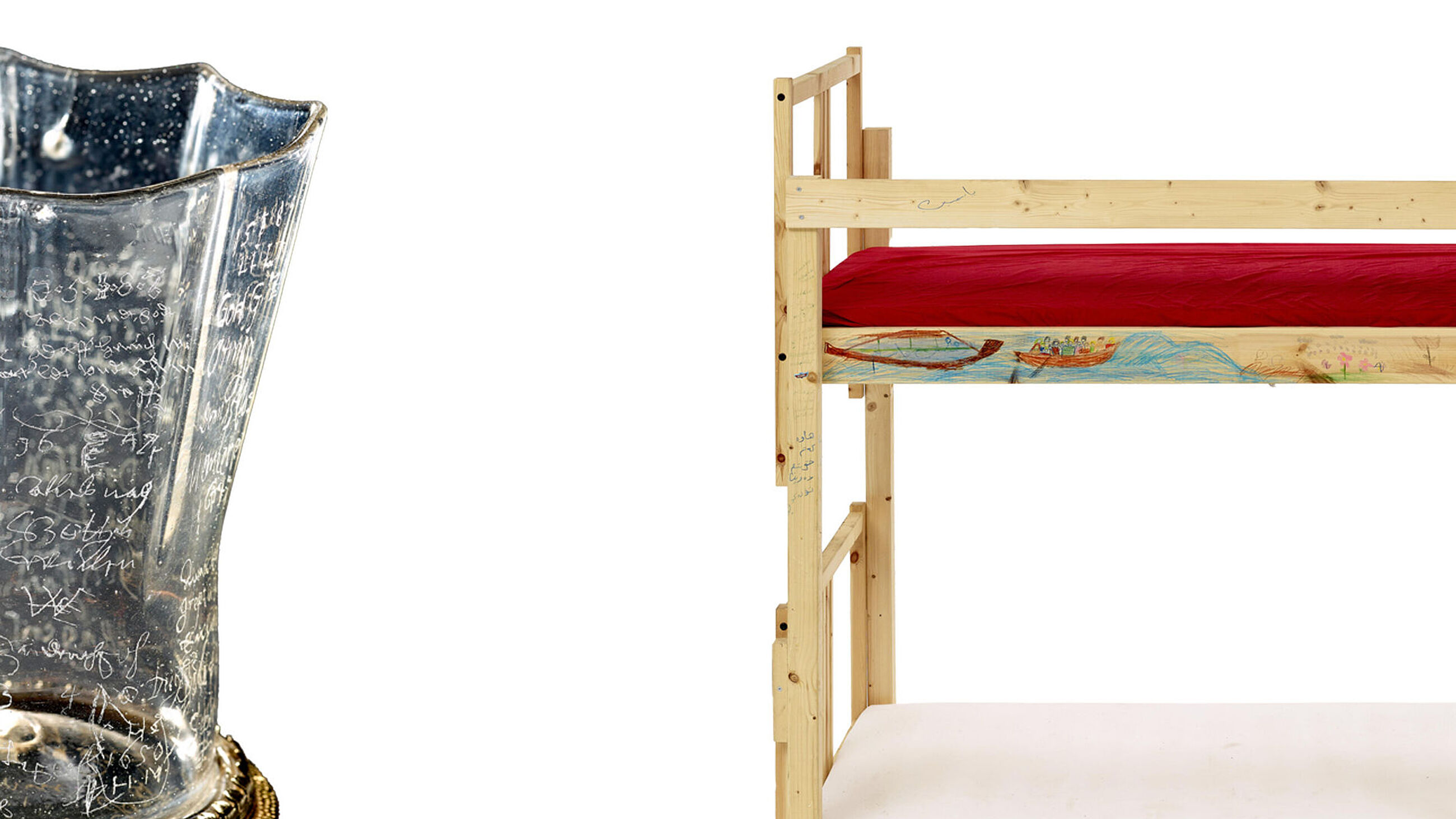
Locating things
Stories of Movement and Transformation from the DHM collection (Working title)
For May 2026, the Deutsches Historisches Museum is planning an exhibition about the collection history of the house, to be shown on the ground floor of the Pei Building.
We are used to thinking about history as perception in time and linear sequence. But history is also bound to places, rooms and settings. History speaks not only about the shift of time, but also about the shift in location. This idea forms the basis of the proposed exhibition. It questions selected objects/bundles about their origin and wanderings, thus exploring and illustrating their history and transformation on the basis of their political, social and cultural spatial contexts.
The museum’s historically evolving collection forms the centre of the exhibition. As a place of remembrance, it is subject to constant change and also reflects the specific collecting practices of the DHM’s antecedent institutions: the Hall of Honour of the Prussian-Brandenburg Army (from 1883), the Army Museum of the Nazi regime (from 1933), the Museum für Deutsche Geschichte of the GDR (from 1952), and the merging of that institution with the DHM (from 1990), which was founded in West Berlin in 1987.
Grouped around the central area are five thematic focal points which, with the help of selected objects from different epochs, allow the main theme of the location of objects to be experienced as a historical spatial complex: places of collecting and discourse in constant movement – the art and natural history cabinets of the Early Modern Age, the areas of rule defined by territory or confession, economic spheres that stand for trade and the exploitation of resources, places that have disappeared or places of belonging and of (regional or national) identity.
By means of “case studies”, significant objects from the DHM collection, many of them barely known and never before displayed in temporaryl exhibitions, will be juxtaposed in deliberate contention with one another and highlighted from different perspectives. Interviews with contemporary witnesses, a medial presentation of the narratives, as well as inclusive stations will supplement the exhibition.
Dr. Wolfgang Cortjaens, head of the collection of applied art and graphics, will curate the exhibition.